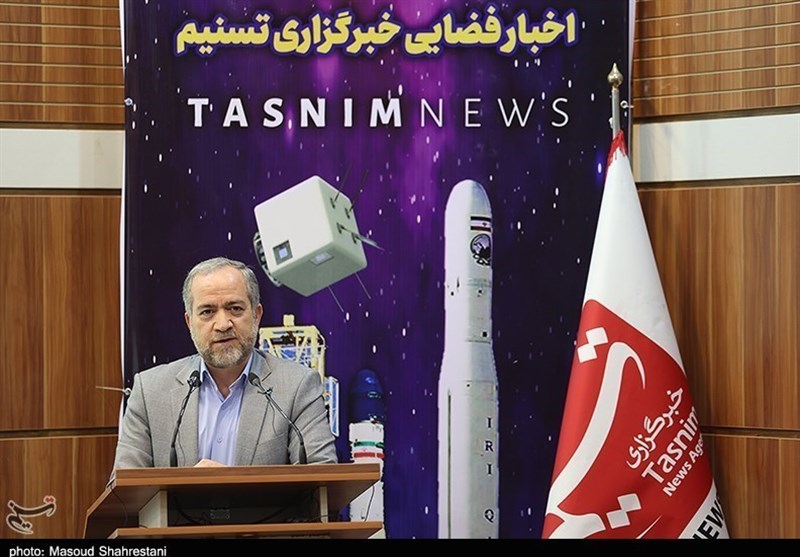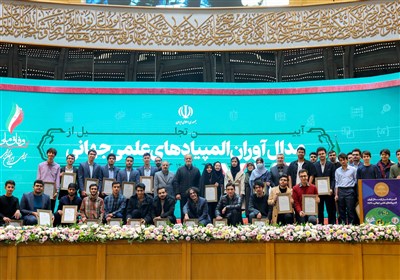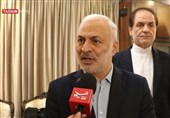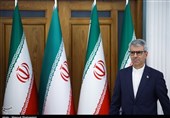Iran Forging Ahead with 'Sarir' Satellite Launcher towards Geostationary Orbit: Defense Ministry
TEHRAN (Tasnim) – The Defense Ministry of Iran steers the 'Sarir' Satellite Launcher towards new heights, as the nation aims to conquer the geostationary orbit (GSO) in its space exploration endeavors, according to a spokesperson.
During a televised appearance about the successful launch of the biological capsule "Kavos," Spokesperson for Iran's Defense Ministry’s Space Division Ahmad Hosseini Mounes underscored the significance of the Sarir satellite launcher, affirming its completion in design and the initiation of construction phases for its subsystems, stating the 'Sarir' satellite launcher marks the initial step towards reaching the geostationary orbit. He also highlighted the strides in stabilizing the Simorgh launcher for future use.
Acknowledging the collaborative efforts within the space sector, he emphasized the active involvement of various organizations operating under the Supreme Space Council, highlighting the Defense Ministry's integral role in overseeing the comprehensive stages of space technology development over the past 15 years.
Detailing the complexities in launcher technology, Hosseini Mounes emphasized the critical nature of this element within the space cycle, citing Iran's self-sufficiency in multiple engineering disciplines and the stringent regulations governing the sector.
Discussing the functionality of different launchers, he differentiated between the capabilities of the Simorgh and Salman launchers, revealing the Space Organization's directive for the next launcher to carry a 1.5-ton payload into space.
Highlighting the transition from suborbital to orbital launches, Hosseini Mounes outlined the technical requirements for satellite placement in orbit and emphasized the pivotal roles of various satellite carriers in different orbital altitudes. “Our upcoming launches will be orbital, requiring us to reach speeds of 3,600 meters per second to place a satellite in orbit. In the Low Earth Orbit (LEO), the satellite carriers 'Safir' and 'Qased' have been positioned for satellites weighing below 50 kilograms…. The Simorgh carrier can place 250 kilograms at 500 kilometers, and the Zoljanah carrier can position 200 kilograms at a 500-kilometer orbit,” he added.
Emphasizing the pivotal role of the Sarir satellite carrier, he delineated its capabilities and the prospects for advancing towards the geostationary orbit, pointing to the ongoing development phases for its subsystems. “Sarir, developed based on Simorgh, can carry a payload of 1500 kilograms in a 200-kilometer orbit. By utilizing orbital transfer blocks currently under development in the country, we can move from the LEO to the geostationary orbit and transport a 100-kilogram satellite into a geostationary orbit,” he said.
Addressing governance in the space sector, he stressed the need for coherence and cohesive policy-making under the Supreme Space Council, referencing its recent sessions and the anticipated positive outcomes from the ten-year program.
Highlighting the significance of launch bases, he outlined the strategic development of the Imam Khomeini Spaceport and future plans for a base in Chabahar, offering increased capabilities for Iran's space launch endeavors.
“Launch bases, in addition to the launcher, are critical, with only seven countries possessing this technology. In the Ministry of Defense, we built the Imam Khomeini Spaceport, from which the Safir, Simorgh, Zoljanah, and Salman satellites were launched. The next base is in Chabahar, which is located along the Indian Ocean, allowing Iran to conduct launches in this area without fear of the launcher falling or associated risks,” Hosseini Mounes added.






